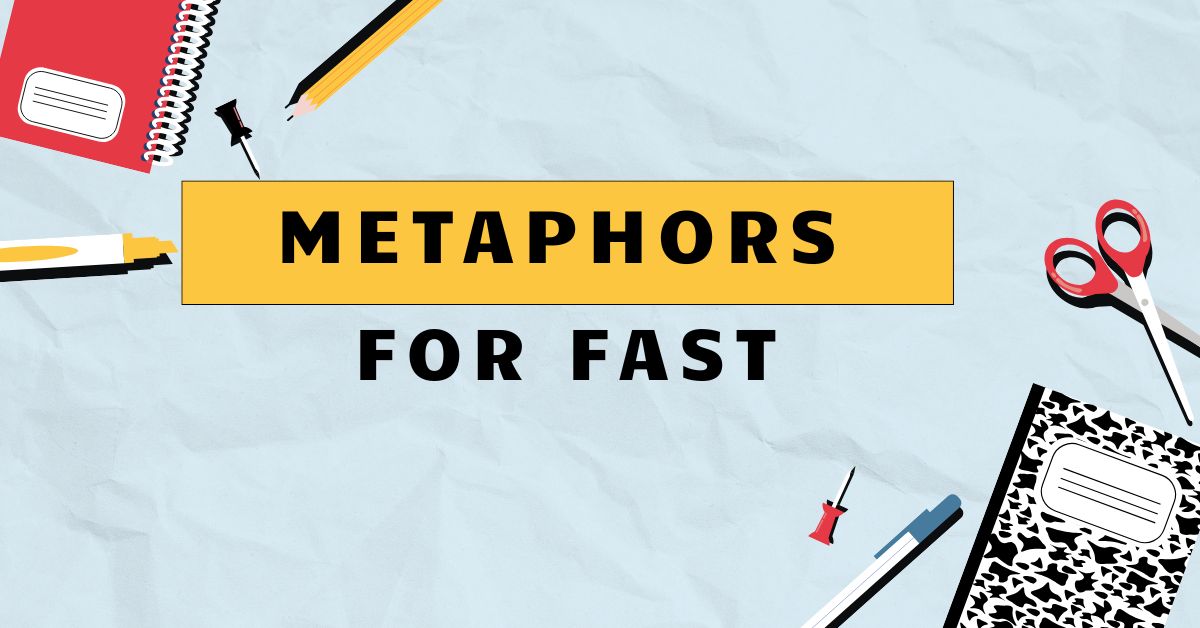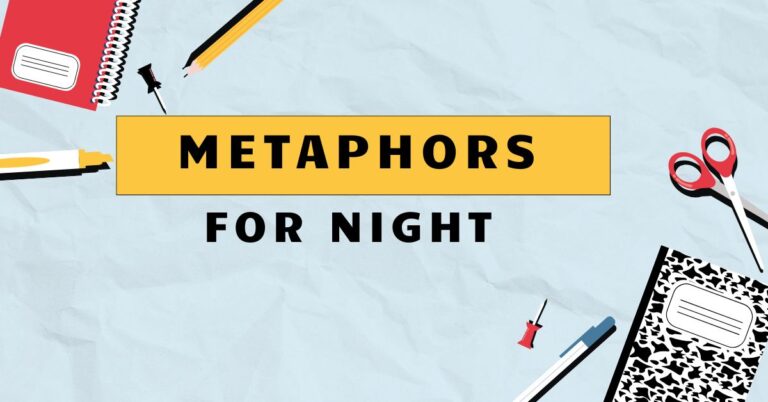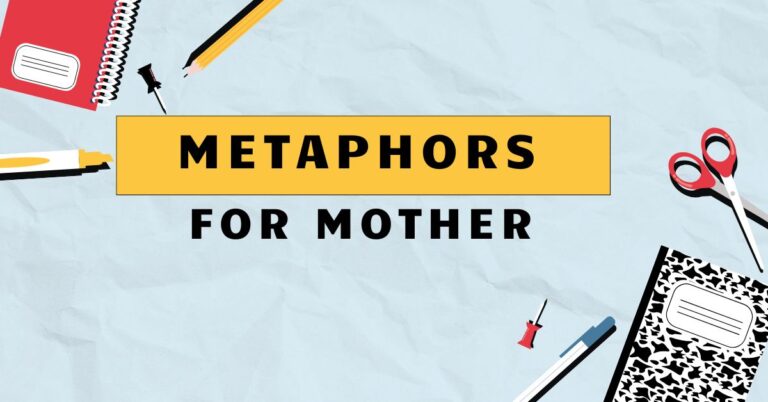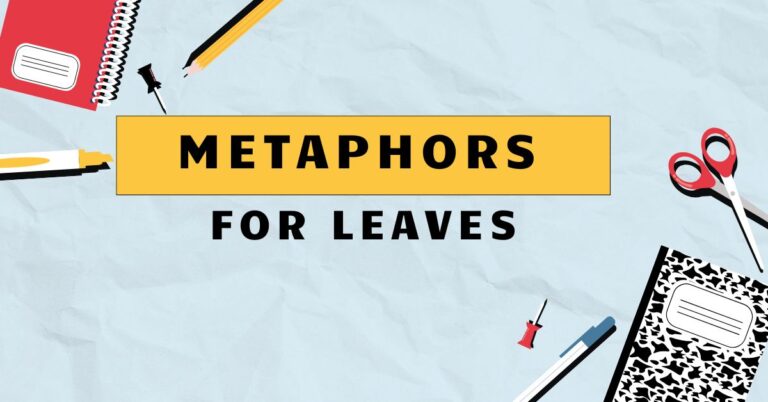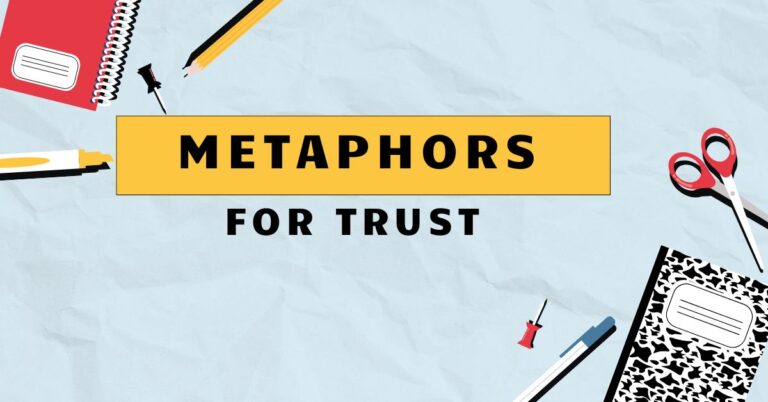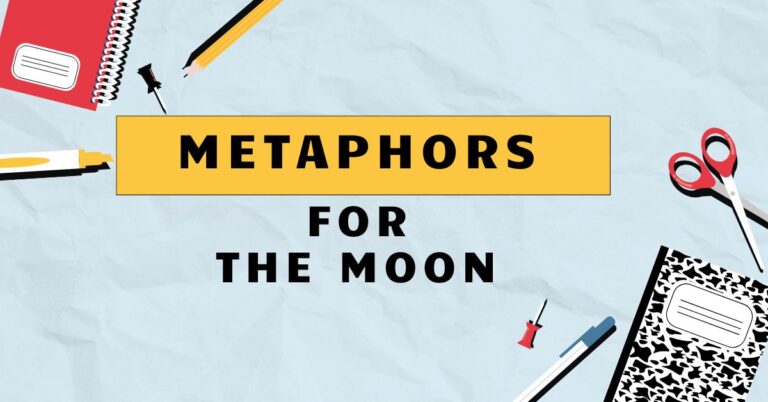33 Metaphors for Fast: Understanding Figurative Language in English
Understanding metaphors for “fast” is crucial for mastering figurative language and enriching your communication skills. Metaphors allow us to express abstract concepts, like speed, in creative and relatable ways by drawing comparisons to familiar objects or actions.
This ability is essential for comprehending literature, poetry, and everyday conversations where metaphorical language is frequently used. This guide benefits English language learners, writers, and anyone seeking to improve their understanding and appreciation of the nuances of the English language by exploring the diverse and imaginative ways “fast” can be conveyed through metaphor.
Table of Contents
- Introduction
- Definition of Metaphor for Fast
- Structural Breakdown
- Types and Categories of Metaphors for Fast
- Examples of Metaphors for Fast
- Usage Rules for Metaphors for Fast
- Common Mistakes with Metaphors for Fast
- Practice Exercises
- Advanced Topics in Metaphors for Fast
- Frequently Asked Questions
- Conclusion
Definition of Metaphor for Fast
A metaphor for “fast” is a figure of speech that compares speed or quickness to something else, without using “like” or “as.” It implies that something moves or happens quickly by associating it with another entity or action known for its speed. Metaphors for “fast” fall under the broader category of figurative language, where words are used in a non-literal sense to create vivid imagery and enhance communication.
The function of these metaphors is to make descriptions more engaging and relatable, helping the audience grasp the concept of speed in a more intuitive way. Consider how “a flash of lightning” conveys sudden, rapid movement, or how describing someone as “a rocket” implies exceptional speed and drive.
Metaphors for “fast” are commonly found across various contexts, including literature, everyday conversation, and even technical writing. In literature, they add depth and artistry to descriptions, making scenes more memorable.
In everyday speech, they help us express ourselves more colorfully and efficiently. Even in technical fields, metaphors can be used to simplify complex concepts, such as describing the speed of data transfer as “flowing like a river.” The effectiveness of a metaphor depends on the audience’s familiarity with the comparison being made.
A well-chosen metaphor can instantly convey the intended meaning, while a poorly chosen one can confuse or mislead.
Structural Breakdown
The basic structure of a metaphor involves two main elements: thetenorand thevehicle. The tenor is the subject being described (in this case, “fast”), and the vehicle is the object or concept used to represent it.
The connection between the tenor and vehicle is the implicit comparison that creates the metaphorical meaning. For example, in the metaphor “time flies,” “time” is the tenor, and “flies” is the vehicle.
The implied comparison is that time passes quickly, similar to how a bird flies rapidly through the air.
Understanding the underlying meaning of a metaphor often requires considering the context in which it is used. The same metaphor can have different connotations depending on the situation.
For instance, “a whirlwind” could describe a fast-paced project or a rapidly changing emotional state. The key to interpreting metaphors effectively is to identify the shared characteristics between the tenor and the vehicle.
What qualities of the vehicle (e.g., the speed of a rocket) are being attributed to the tenor (e.g., the runner)? By recognizing these connections, we can unlock the full meaning and impact of the metaphor.
Metaphors can be simple, using a single word or phrase, or they can be extended, developing the comparison over several sentences or even an entire paragraph. Extended metaphors allow for a more detailed and nuanced exploration of the relationship between the tenor and the vehicle.
They are often used in poetry and prose to create complex and layered meanings. Consider the phrase “He was a cheetah on the track,” which could be extended to describe his movements, his focus, and even the reactions of his competitors, all reinforcing the initial comparison to a cheetah’s speed and agility.
Types and Categories of Metaphors for Fast
Metaphors for “fast” can be categorized based on the type of entity or action they use for comparison. These categories help organize and understand the different ways speed can be metaphorically expressed.
Animal Metaphors
Animal metaphors often draw on the inherent speed and agility of certain creatures to describe swiftness. These metaphors are effective because animals are easily recognizable and their movements are well-understood.
Examples include: “He ran like a cheetah,” “She moved like a hummingbird,” and “The information spread like wildfire.” These comparisons evoke images of rapid movement and agility, instantly conveying the idea of speed.
Vehicle Metaphors
Vehicle metaphors use modes of transportation, such as cars, trains, and planes, to represent speed. These metaphors are particularly useful for describing technological advancements and rapid progress.
Examples: “The project is moving at warp speed,” “Her career took off like a rocket,” and “The news traveled at the speed of light.” These metaphors highlight the efficiency and swiftness associated with modern transportation.
Natural Phenomena Metaphors
Natural phenomena metaphors leverage the power and speed of natural events, such as lightning, wind, and rivers, to convey a sense of rapid movement or change. These metaphors often emphasize the uncontrollable and overwhelming nature of speed.
Examples: “The rumors spread like wildfire,” “He finished the task in a flash,” and “Time flowed like a river.” These comparisons highlight the unstoppable and often unpredictable nature of speed.
Action Metaphors
Action metaphors use verbs and actions to describe speed, focusing on the dynamic process of moving quickly. These metaphors often emphasize the effort and energy involved in rapid movement.
Examples: “He zipped through the crowd,” “She dashed across the street,” and “The idea took off.” These metaphors highlight the active and energetic nature of speed.
Abstract Metaphors
Abstract metaphors use intangible concepts, such as time, thought, and emotion, to represent speed. These metaphors often convey a more nuanced and subjective sense of rapid change or progress.
Examples: “Time flies when you’re having fun,” “Her mind raced with ideas,” and “The opportunity vanished in a heartbeat.” These metaphors highlight the ephemeral and subjective nature of speed.
Examples of Metaphors for Fast
The following tables provide extensive examples of metaphors for “fast,” organized by the categories discussed above. Each table includes a wide range of examples to illustrate the diverse ways speed can be expressed metaphorically.
The table below showcases animal metaphors for “fast,” demonstrating how different animals and their inherent speed can be used to describe rapid movement or action.
| Category | Metaphor | Explanation |
|---|---|---|
| Animal | He ran like a cheetah on the track. | Compares the runner’s speed to the swiftness of a cheetah. |
| Animal | She moved like a hummingbird, flitting from task to task. | Describes someone who moves quickly and gracefully. |
| Animal | The news spread like wildfire through the town. | Indicates how quickly the news disseminated. |
| Animal | He was a gazelle, leaping over obstacles. | Emphasizes agility and speed in overcoming challenges. |
| Animal | The information traveled like a lightning bolt. | Implies the information was rapidly shared. |
| Animal | She worked like a beaver, tirelessly and quickly. | Suggests diligent and fast-paced work. |
| Animal | The car sped off like a scalded cat. | Describes a vehicle accelerating very quickly. |
| Animal | He reacted like a cobra, striking with precision and speed. | Highlights quick and precise reactions. |
| Animal | The children scattered like ants when the bell rang. | Depicts a rapid and disorganized dispersal. |
| Animal | She swooped in like an eagle, seizing the opportunity. | Emphasizes a fast and decisive action. |
| Animal | The gossip flew around like a flock of birds. | Suggests the rapid and widespread dissemination of rumors. |
| Animal | He darted through the crowd like a mouse. | Describes quick and nimble movement. |
| Animal | The project progressed like a locust swarm, devouring resources quickly. | Implies rapid and overwhelming consumption. |
| Animal | She pounced on the idea like a lion on its prey. | Highlights a quick and decisive grasp of an opportunity. |
| Animal | He swam like a barracuda, cutting through the water with speed. | Describes efficient and rapid swimming. |
| Animal | The response was as swift as a falcon’s dive. | Emphasizes the quick and decisive nature of the response. |
| Animal | She zipped through the email inbox like a busy bee. | Suggests efficient and fast handling of emails. |
| Animal | The car accelerated like a jackrabbit. | Describes rapid acceleration. |
| Animal | He dodged the question like a slippery eel. | Highlights quick and evasive maneuvering. |
| Animal | The news traveled as fast as a carrier pigeon. | Implies a rapid and targeted delivery of information. |
| Animal | The athlete sprinted like a greyhound. | Compares the runner’s speed to the swiftness of a greyhound. |
| Animal | She reacted as quick as a cat. | Describes someone who reacts quickly. |
| Animal | The runner was a roadrunner on the track. | Emphasizes speed and agility in running. |
The table below contains vehicle metaphors, which use modes of transportation to convey speed. These metaphors are particularly effective for describing technological progress and rapid advancements.
| Category | Metaphor | Explanation |
|---|---|---|
| Vehicle | The project is moving at warp speed. | Indicates extremely fast progress. |
| Vehicle | Her career took off like a rocket. | Describes a rapid and successful ascent. |
| Vehicle | The news traveled at the speed of light. | Implies instantaneous dissemination. |
| Vehicle | He zoomed through the city like a race car. | Emphasizes speed and agility in navigating the city. |
| Vehicle | The company’s growth was like a high-speed train. | Highlights rapid and unstoppable growth. |
| Vehicle | The data transferred like a fiber optic cable. | Suggests extremely fast data transmission. |
| Vehicle | She navigated the meeting like a fighter jet. | Describes quick and decisive handling of the meeting. |
| Vehicle | The process was streamlined, moving like an assembly line. | Emphasizes efficiency and speed in the process. |
| Vehicle | He bypassed the traffic like a motorcycle weaving through cars. | Highlights agility and speed in avoiding obstacles. |
| Vehicle | The innovation spread like a bullet train across the industry. | Implies rapid and widespread adoption. |
| Vehicle | The new software runs like a formula one race car. | Suggests extremely fast software performance. |
| Vehicle | Information was delivered as if sent by teleportation. | Implies instantaneous delivery of information. |
| Vehicle | The company expanded like a cruise missile, precisely and quickly. | Emphasizes precision and speed in expansion. |
| Vehicle | He accelerated his learning like a turbo engine. | Highlights rapid acceleration in learning. |
| Vehicle | The presentation moved forward like a locomotive. | Describes a powerful and unstoppable forward movement. |
| Vehicle | She navigated the legal jargon like a GPS. | Emphasizes quick and accurate navigation. |
| Vehicle | The project was completed with the speed of a drone delivery. | Suggests fast and efficient completion. |
| Vehicle | He climbed the corporate ladder like a skyrocket. | Describes a rapid and successful career climb. |
| Vehicle | The data flowed like a firehose of information. | Highlights a large volume of information delivered quickly. |
| Vehicle | She processed the data like a supercomputer. | Implies extremely fast data processing. |
| Vehicle | The business took off like a space shuttle. | Describes a rapid and successful business launch. |
| Vehicle | He adapted to the new environment as fast as a chameleon changing colors. | Describes adaptation as fast as a chameleon changing colors. |
| Vehicle | The response was immediate, like a guided missile. | Emphasizes a quick and efficient response. |
The following table illustrates metaphors using natural phenomena. These metaphors often convey a sense of overwhelming and uncontrollable speed.
| Category | Metaphor | Explanation |
|---|---|---|
| Natural Phenomenon | The rumors spread like wildfire. | Indicates how quickly the rumors disseminated. |
| Natural Phenomenon | He finished the task in a flash. | Describes a very quick completion. |
| Natural Phenomenon | Time flowed like a river. | Implies a constant and rapid passage of time. |
| Natural Phenomenon | The market changed like a whirlwind. | Emphasizes rapid and unpredictable changes. |
| Natural Phenomenon | Her anger flared up like a volcano. | Highlights a sudden and intense outburst. |
| Natural Phenomenon | The rain came down in a torrent. | Describes a heavy and rapid downpour. |
| Natural Phenomenon | The project gained momentum like an avalanche. | Implies rapidly increasing momentum. |
| Natural Phenomenon | The news hit him like a thunderbolt. | Emphasizes the sudden and shocking impact of the news. |
| Natural Phenomenon | His ideas flowed like a waterfall. | Describes a continuous and abundant stream of ideas. |
| Natural Phenomenon | The opportunity vanished like morning mist. | Implies a quick and elusive disappearance. |
| Natural Phenomenon | The change happened like a shift in tectonic plates. | Suggests a fundamental and rapid transformation. |
| Natural Phenomenon | His temper exploded like a solar flare. | Emphasizes a sudden and intense display of anger. |
| Natural Phenomenon | Emotions surged like a tidal wave. | Describes an overwhelming and rapid surge of emotions. |
| Natural Phenomenon | The scandal spread like a dust devil. | Indicates a rapid and chaotic dissemination of scandalous information. |
| Natural Phenomenon | His recovery progressed like a spring thaw. | Implies a gradual but steady improvement. |
| Natural Phenomenon | The company grew like a bamboo shoot. | Describes rapid and vertical growth. |
| Natural Phenomenon | The crowd dispersed like leaves in the wind. | Emphasizes a rapid and scattered dispersal. |
| Natural Phenomenon | The deadline loomed like a gathering storm. | Implies an impending and unavoidable event. |
| Natural Phenomenon | Her tears fell like a monsoon. | Describes a heavy and uncontrolled outpouring of tears. |
| Natural Phenomenon | The tension snapped like a dry twig. | Highlights a sudden and abrupt release of tension. |
| Natural Phenomenon | The plan unraveled like a house of cards in a hurricane. | Implies a rapid and complete collapse. |
| Natural Phenomenon | His ideas sparked like firecrackers. | Describes a sudden and exciting burst of ideas. |
| Natural Phenomenon | The response was as immediate as an echo. | Emphasizes a quick and direct response. |
This table showcases action metaphors, where verbs and actions are used to describe speed, focusing on the dynamic process of moving quickly.
| Category | Metaphor | Explanation |
|---|---|---|
| Action | He zipped through the crowd. | Describes moving quickly and effortlessly. |
| Action | She dashed across the street. | Implies a quick and hurried movement. |
| Action | The idea took off. | Describes a rapid and successful launch. |
| Action | He raced to the finish line. | Emphasizes speed and competition. |
| Action | She flew through the presentation. | Highlights a quick and efficient delivery. |
| Action | The project sprinted to completion. | Implies a final burst of speed and effort. |
| Action | He blazed through the competition. | Describes a dominant and fast performance. |
| Action | She whizzed through the paperwork. | Highlights a quick and efficient handling of paperwork. |
| Action | They hurdled over obstacles. | Emphasizes speed and agility in overcoming challenges. |
| Action | The opportunity vanished in a heartbeat. | Implies a quick and elusive disappearance. |
| Action | He scrambled to meet the deadline. | Suggests a hurried and disorganized effort. |
| Action | She shot through the ranks. | Describes a rapid and successful career advancement. |
| Action | The information poured in. | Highlights a large volume of information delivered quickly. |
| Action | He leapt at the chance. | Emphasizes a quick and enthusiastic response. |
| Action | She darted a glance at her watch. | Describes a quick and subtle look. |
| Action | The market surged forward. | Implies a rapid and powerful advancement. |
| Action | He dove into the project. | Describes an immediate and enthusiastic engagement. |
| Action | She sailed through the interview. | Highlights a smooth and successful performance. |
| Action | The news erupted across social media. | Implies a sudden and widespread dissemination. |
| Action | He accelerated his studies. | Describes rapid progress in learning. |
| Action | She snapped to attention. | Implies an immediate and alert response. |
| Action | The team rallied quickly after the setback. | Describes a rapid and coordinated recovery. |
| Action | He powered through the final stretch. | Emphasizes strength and speed in completing the task. |
Usage Rules for Metaphors for Fast
Using metaphors effectively requires careful consideration of the audience, context, and the intended meaning. Here are some rules to guide the proper use of metaphors for “fast”:
- Clarity: The metaphor should be easily understandable and relatable to the audience. Avoid obscure or overly complex comparisons.
- Relevance: The comparison should be relevant to the subject being described. The vehicle should share meaningful characteristics with the tenor.
- Consistency: Maintain consistency within the metaphor. Avoid mixing metaphors or creating contradictory comparisons.
- Originality: Strive for originality to make your writing more engaging and memorable. Avoid clichés and overused metaphors.
- Context: Consider the context in which the metaphor is used. The same metaphor can have different connotations depending on the situation.
Exceptions and Special Cases:
While clarity is generally desired, sometimes ambiguity can be used intentionally for artistic effect. In poetry or creative writing, metaphors can be more abstract and open to interpretation.
It is important to understand that cultural context plays a significant role in the interpretation of metaphors. A metaphor that is effective in one culture may not be effective in another.
Common Mistakes with Metaphors for Fast
Several common mistakes can undermine the effectiveness of metaphors. Here are some frequent errors to avoid:
- Mixed Metaphors: Combining two or more incompatible metaphors, creating a confusing and illogical image.
- Clichés: Using overused and unoriginal metaphors that have lost their impact.
- Inappropriate Comparisons: Choosing vehicles that do not accurately represent the tenor, leading to misunderstandings.
- Overly Complex Metaphors: Creating metaphors that are too difficult to understand, defeating the purpose of simplification.
Examples of Correct vs. Incorrect Usage:
Correct: “He ran like a cheetah.” (Clear, relevant comparison)
Incorrect: “He ran like a cheetah, but his ideas were a slow-moving train.” (Mixed metaphor, inconsistent comparison)
Correct: “The project is moving at warp speed.” (Modern, relevant comparison)
Incorrect: “The project is moving faster than a speeding bullet.” (Cliché, overused metaphor)
Practice Exercises
Test your understanding of metaphors for “fast” with the following exercises. Identify the type of metaphor used in each sentence and explain its meaning.
| Question | Type of Metaphor | Explanation |
|---|---|---|
| 1. The information spread like wildfire. | ||
| 2. Her career took off like a rocket. | ||
| 3. He zipped through the crowd. | ||
| 4. Time flies when you’re having fun. | ||
| 5. She moved like a hummingbird. | ||
| 6. The project is moving at warp speed. | ||
| 7. The opportunity vanished in a heartbeat. | ||
| 8. His ideas flowed like a waterfall. | ||
| 9. He ran like a cheetah on the track. | ||
| 10. The market changed like a whirlwind. |
Answers:
| Question | Type of Metaphor | Explanation |
|---|---|---|
| 1. The information spread like wildfire. | Natural Phenomenon | The rapid dissemination of information is compared to the uncontrolled spread of a fire. |
| 2. Her career took off like a rocket. | Vehicle | The rapid and successful ascent of her career is compared to the launch of a rocket. |
| 3. He zipped through the crowd. | Action | His quick and effortless movement through the crowd is described using the verb “zipped.” |
| 4. Time flies when you’re having fun. | Abstract | The subjective experience of time passing quickly is compared to the act of flying. |
| 5. She moved like a hummingbird. | Animal | Her quick and graceful movements are compared to the agility of a hummingbird. |
| 6. The project is moving at warp speed. | Vehicle | The extremely fast progress of the project is compared to the speed of warp drive. |
| 7. The opportunity vanished in a heartbeat. | Abstract | The quick disappearance of the opportunity is compared to the brief duration of a heartbeat. |
| 8. His ideas flowed like a waterfall. | Natural Phenomenon | The continuous and abundant stream of his ideas is compared to the flow of a waterfall. |
| 9. He ran like a cheetah on the track. | Animal | The runner’s speed is compared to the swiftness of a cheetah. |
| 10. The market changed like a whirlwind. | Natural Phenomenon | The rapid and unpredictable changes in the market are compared to the chaotic nature of a whirlwind. |
Exercise 2: Rewrite the following sentences using metaphors for “fast.”
| Question |
|---|
| 1. The car accelerated quickly. |
| 2. She responded immediately. |
| 3. The news spread rapidly. |
| 4. He learned very fast. |
| 5. The company grew quickly. |
| 6. The project was completed in a short time. |
| 7. She finished the race very fast. |
| 8. The data was transferred quickly. |
| 9. He made a decision rapidly. |
| 10. The stock price increased fast. |
Answers:
| Answer |
|---|
| 1. The car shot off like a rocket. |
| 2. She responded as quick as lightning. |
| 3. The news spread like wildfire through the town. |
| 4. He absorbed the information like a sponge. |
| 5. The company grew like a bamboo shoot in spring. |
| 6. The project was completed in a flash. |
| 7. She flew through the race, a blur of motion. |
| 8. The data was transmitted at the speed of light. |
| 9. He made a decision in the blink of an eye. |
| 10. The stock price skyrocketed. |
Advanced Topics in Metaphors for Fast
For advanced learners, understanding the nuances of metaphor involves exploring more complex aspects such as:
- Extended Metaphors: Developing a single metaphor over multiple sentences or paragraphs to create a rich and layered meaning.
- Subtle Metaphors: Using understated comparisons that require deeper interpretation.
- Dead Metaphors: Recognizing metaphors that have become so common that they are no longer perceived as figurative (e.g., “leg of a table”).
- Conceptual Metaphors: Understanding how metaphors shape our understanding of abstract concepts (e.g., “time is money”).
Analyzing how skilled writers use metaphors can provide valuable insights into crafting more effective and engaging prose. Pay attention to how they choose their vehicles, develop their comparisons, and integrate metaphors seamlessly into their writing.
Frequently Asked Questions
- What is the difference between a metaphor and a simile?
A metaphor directly equates two things without using “like” or “as,” while a simile uses “like” or “as” to make a comparison. For example, “He is a lion” (metaphor) versus “He is like a lion” (simile).
- Why are metaphors useful in writing?
Metaphors add depth, imagery, and emotional resonance to writing. They help readers understand abstract concepts by relating them to familiar experiences.
- How can I avoid using clichés in my metaphors?
Strive for originality by thinking creatively about the subject you are describing and finding unique comparisons that haven’t been overused. Consider less common associations and perspectives.
- What is a mixed metaphor, and why should I avoid it?
A mixed metaphor combines two or more incompatible metaphors, creating a confusing and illogical image. It undermines the clarity and coherence of your writing.
- How do I choose the right metaphor for my audience?
Consider your audience’s background, knowledge, and cultural context. Choose metaphors that are relatable and understandable to them.
- Can a metaphor be too abstract?
Yes, if a metaphor is too abstract or obscure, it can confuse the reader and fail to convey the intended meaning. Aim for a balance between creativity and clarity.
- How can I improve my ability to understand metaphors?
Practice reading widely and paying attention to how metaphors are used in different contexts. Analyze the comparisons being made and consider the underlying meanings.
- What is the role of context in interpreting metaphors?
Context is crucial for understanding metaphors. The same metaphor can have different meanings depending on the situation and the surrounding text.
Conclusion
Mastering the use of metaphors for “fast” can significantly enhance your communication skills and add depth to your writing. By understanding the different types of metaphors, following usage rules, and avoiding common mistakes, you can craft compelling and memorable descriptions of speed.
Continue practicing and exploring the creative possibilities of figurative language to unlock its full potential.

